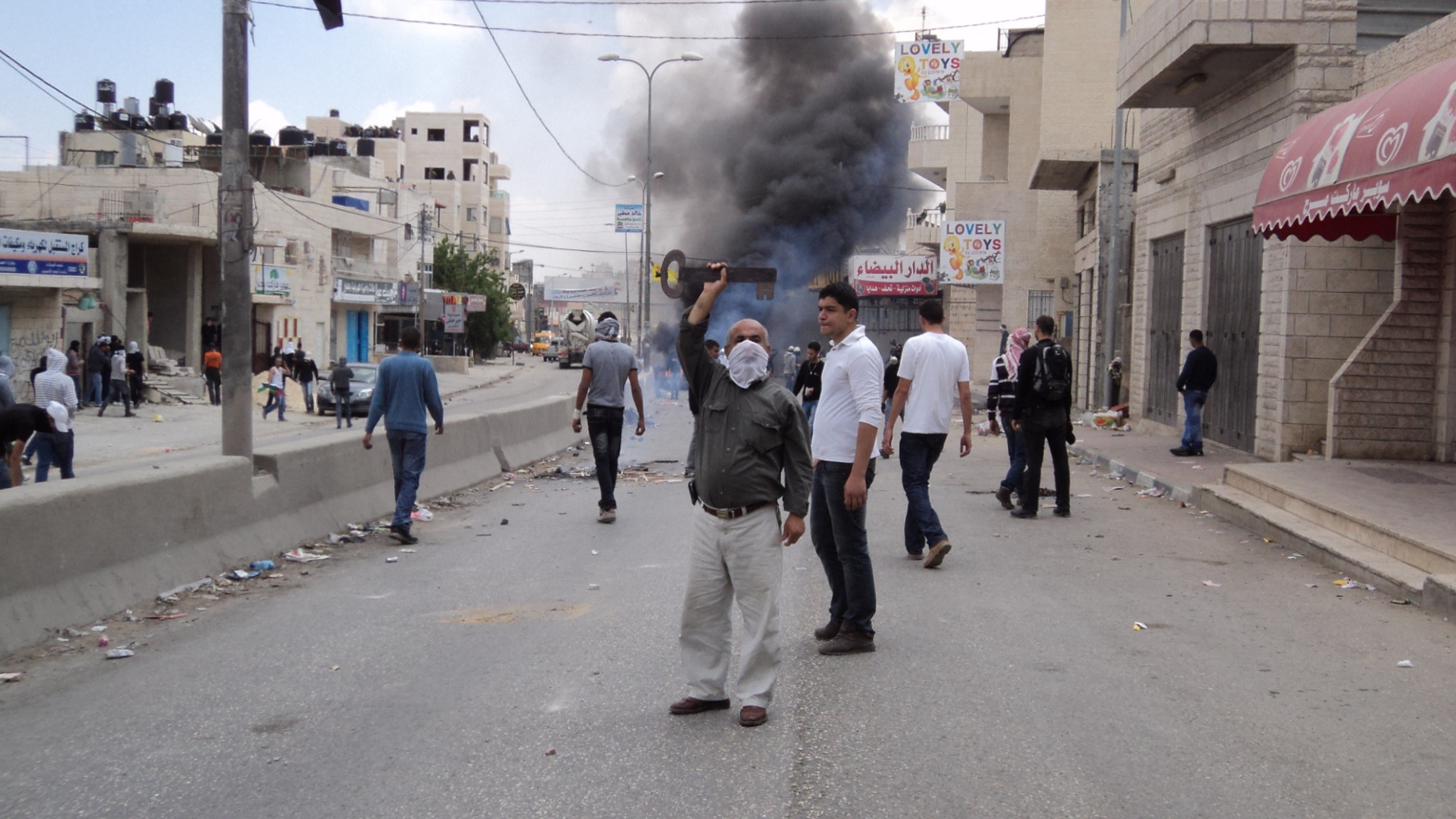Tag: Demonstration
-
Bloody Nakba Day; 16 killed, 400 injured as Israeli troops attack protesters
16 May 2011 | Palestine News Network As protests commemorating Nakba ended on Sunday night sources confirmed that Israeli military attacks on those protests left 16 killed and 400 injured. Israeli troops attacked Nakba protests in several parts of the West Bank, Jerusalem, the Gaza Strip, in addition to the Lebanese and Syrian borders. Maroun…
-
Protesters commemorate the Nakba at Qalandyia
15 May 2011 | International Solidarity Movement From 11.00 this morning until 21.00 at night, the International Solidarity Movement joined with thousands of Palestinians and other Internationals in commemorating the Nakba by demonstrating at Qalandiya checkpoint which separates the West Bank from Jerusalem and the rest of pre-1948 Palestine. As protesters united in denouncing the…
-
Israeli forces violently arrest demonstrators in al-Walaja
15 May 2011 | International Solidarity Movement At 11 AM on al-Nakba remembrance day, 500 residents from the West Bank village of al-Wallajeh and international supporters marched towards the Israeli Apartheid Wall. The Wall was built to separate the villagers from their original land from which they were expelled in 1948. The demonstration was violently…

